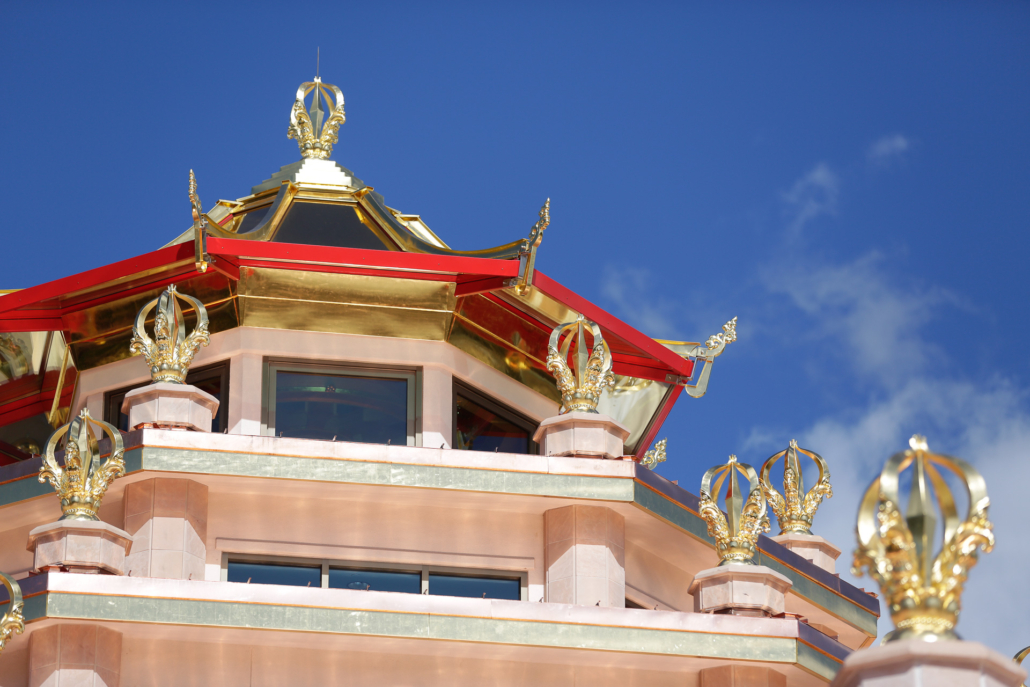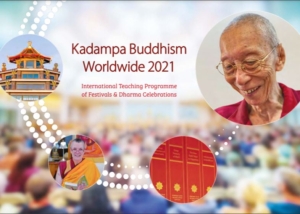Kadampa Buddhism
By practicing Buddha’s teachings, or Dharma, we protect ourself from suffering and problems. All the problems we experience during daily life originate in ignorance, and the method for eliminating ignorance is to practice Dharma.
Practicing Dharma is the supreme method for improving the quality of our human life because the quality of life depends not upon external development or material progress, but upon the inner development of peace and happiness.
Kadampa Buddhism is a Mahayana Buddhist school founded by the great Indian Buddhist Master Atisha (AD 982-1054).
In the word, ‘Kadampa’, ‘Ka’ refers to Buddha’s teachings, and ‘dam’ to Atisha’s special Lamrim instructions. Kadampas, then, are practitioners who regard Buddha’s teachings as personal instructions and put them into practice by following the instructions of Lamrim.
By integrating their understanding of all Buddha’s teachings into their practice of Lamrim, and by integrating their experience of Lamrim into their everyday lives, Kadampas use Buddha’s teachings as practical methods for transforming daily activities into the path to enlightenment.
The great Kadampa Teachers
After Atisha, the Kadampa lineage was passed down through a succession of great Kadampa Teachers including Dromtönpa, Geshe Potowa, Geshe Sharawa, and Geshe Chekhawa.
These precious Teachers were not only great scholars but also spiritual practitioners of immense purity and sincerity.
They placed particular emphasis on the practice of Training the Mind (Lojong) by which all our daily life experiences, and especially all our problems, suffering, and difficulties, can be transformed into the spiritual path.
The New Kadampas
The Kadampa lineage passed from generation to generation until the fourteenth century when it reached the great Buddhist Master Je Tsongkhapa.
Je Tsongkhapa clarified all the teachings of Kadam Dharma and made them very accessible to the people of that time.
In particular, he showed how to combine Lamrim, and Lojong with Mahamudra Tantra in a unified daily practice.
Just as the union of study and practice was a hallmark of the early Kadampas, so the union of Sutra and Tantra was to become a hallmark of the New Kadampas, as the followers of Je Tsongkhapa became known.
Modern Kadampa Buddhism
After Je Tsongkhapa, the New Kadampa lineage flourished for hundreds of years, down to the present day.
In recent years, it has been promoted widely throughout the world by the contemporary Buddhist Master, Venerable Geshe Kelsang Gyatso.
By founding the New Kadampa Tradition, the International Kadampa Buddhist Union, Geshe Kelsang has created a truly global infrastructure to preserve and promote Kadampa Buddhism for many generations to come.
Modern Kadampa Buddhism is a special, practical presentation of Buddha’s teachings that is particularly suited to the modern world, so that anyone of any nationality, age or gender can easily understand and put into practice.
It was introduced into contemporary society by the world-renowned meditation master and scholar Venerable Geshe Kelsang Gyatso Rinpoche.



